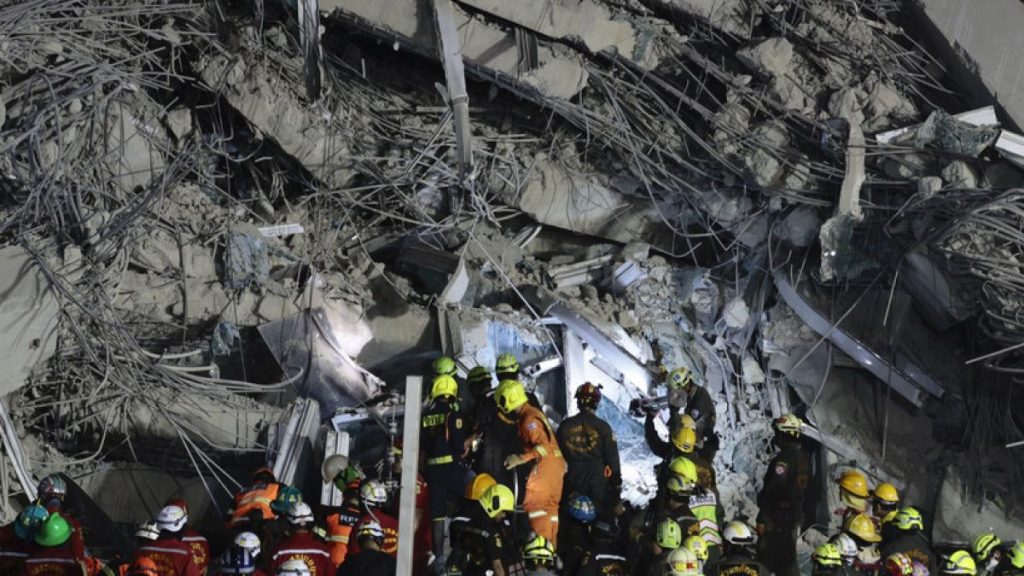A devastating earthquake of 7.7 magnitude struck Mandalay, central Myanmar, on Friday, causing widespread destruction and a significant loss of life. Early reports indicate more than 140 fatalities, with officials warning that the number may rise due to ongoing rescue operations in the affected areas. The quake also triggered aftershocks that were felt as far away as Bangkok, Thailand, leading to further casualties from a collapsed high-rise building. The full impact of this natural disaster is still unfolding in one of the world’s most disadvantaged nations.
| Article Subheadings |
|---|
| 1) Scope of the Damage and Casualties |
| 2) Response from the Government and International Community |
| 3) Challenges in Rescue and Relief Operations |
| 4) Historical Context of Earthquakes in the Region |
| 5) Long-Term Implications for Myanmar |
Scope of the Damage and Casualties
The earthquake that hit Mandalay resulted in severe destruction, with initial reports suggesting that more than 140 individuals have perished. The government’s declaration of hundreds feared dead illustrates the profound impact, as ongoing search and rescue efforts uncover additional trapped individuals. With over 700 people reported injured and more than 100 unaccounted for, the situation remains fraught with uncertainty, complicated by Myanmar’s ongoing civil conflicts that hamper information flow.
Buildings have collapsed across the city, including one of Mandalay’s largest monasteries, highlighting vulnerabilities in infrastructure. This disaster strikes a nation where the economic conditions are dire, and the health care system is already under strain, suggesting that the ramifications of this tragedy could be particularly devastating.
Response from the Government and International Community
Following the earthquake, Myanmar’s military government has expressed a readiness to accept international assistance, a notable shift from its historical reluctance to allow foreign aid in times of crisis. Senior General Min Aung Hlaing has stated that there is a high demand for blood and medical services in the hardest-hit areas.
In light of the disaster, the United Nations has allocated an initial $5 million toward immediate relief efforts. Furthermore, US President Donald Trump has pledged support for recovery operations, although some observers remain skeptical of the effectiveness of this aid, given the previous administrations’ significant cuts to foreign assistance programs.
Challenges in Rescue and Relief Operations
Rescue operations are encountering significant challenges due to the ongoing humanitarian crisis in Myanmar, which complicates the movement of aid and emergency services. Many key areas remain inaccessible, and rescue workers face difficulties reaching those in urgent need. The country’s infrastructure, already strained from previous conflicts, deteriorated further due to the quake, adding to the logistical nightmare.
Reports of buckled roads, collapsed bridges, and broken dams compound the overall response issues. As authorities scramble to assemble resources, there are fears that the logistical constraints will severely impede effective relief operations.
Historical Context of Earthquakes in the Region
Myanmar lies in an active earthquake zone, yet significant tremors have historically occurred in remote areas, thus often sparing major urban centers. This earthquake stands in stark contrast to earlier patterns, as it struck one of the country’s largest cities, Mandalay, and affected nearby regions, raising awareness about building codes and infrastructure readiness amidst seismic activities.
The earthquake has also generated concerns about the government’s preparedness and response mechanisms to natural disasters, particularly in a region vulnerable to such catastrophic events. Moving forward, this incident may catalyze discussions about improving these mechanisms and supporting infrastructure resilience to mitigate future vulnerabilities.
Long-Term Implications for Myanmar
The long-term implications for Myanmar as a result of this earthquake are profound. Not only does the loss of life deeply impact families and communities, but the destruction of infrastructure poses significant economic challenges for a nation already struggling with poverty and civil unrest. The recovery phase will likely stretch for years, burdening the already beleaguered population.
As the country begins to recover, it may face difficult choices concerning the allocation of limited resources and the rebuilding of damaged infrastructure. The ongoing political situation might also lead to questions about the effectiveness of international aid and the governmental capacity to manage such crises effectively in the future.
| No. | Key Points |
|---|---|
| 1 | A 7.7 magnitude earthquake struck Mandalay, Myanmar, with over 140 fatalities reported. |
| 2 | Rescue efforts are complicated by the country’s ongoing civil conflict and infrastructure challenges. |
| 3 | The international community, including the UN and the US, has pledged financial support for recovery efforts. |
| 4 | The earthquake raises concerns about building safety standards in earthquake-prone regions. |
| 5 | Long-term economic challenges may arise from the destruction, affecting Myanmar’s recovery process. |
Summary
The earthquake that struck Mandalay has wrought devastation upon a nation already grappling with numerous challenges. As the extent of the damage unfolds, the response from local authorities and the international community will be pivotal in determining the efficacy of relief efforts. The intersection of geological realities with the socio-political context of Myanmar will undoubtedly shape the recovery path for the affected communities, spotlighting the urgent need for better preparedness in the face of natural disasters.
Frequently Asked Questions
Question: What were the immediate impacts of the earthquake in Mandalay?
The earthquake resulted in over 140 fatalities, with fears that the death toll may rise significantly. Widespread structural damage occurred, impacting buildings, infrastructure, and leading to hundreds of injuries.
Question: How has the international community responded to the disaster?
The United Nations has allocated $5 million for relief efforts, and the U.S. government has offered assistance. There is hope that international aid will help address the immediate needs of affected populations.
Question: What are the long-term challenges Myanmar might face following this earthquake?
Myanmar may experience significant economic challenges, as rebuilding and recovery will require substantial resources. Ongoing political instability and infrastructural fragility may complicate long-term recovery efforts for the affected communities.


